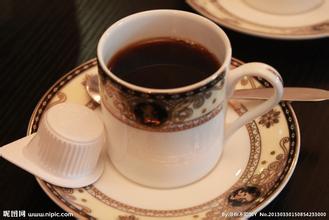Also sweet Brazilian coffee bean flavor description method grinding scale manor production area introduction
When it comes to Indonesian coffee, we must not miss the high-end Mantenin of Sumatra, which has a unique fragrant taste, slightly acidic taste and can be said to be the best in the world. In addition, Arabica coffee produced in Java is the favorite of Europeans, which is sweet in bitterness and sour in sweetness.
Top quality beans: Sumatra? Manning
Taste characteristics: bitter and full-bodied, but also sweet.
The best frying degree: depth
Costa Rica
The coffee beans produced at the high latitudes of Costa Rica are famous in the world, full-bodied, mild in taste, but extremely sour. The coffee beans here have been carefully processed, which is why they have high quality coffee. The famous coffee is produced in the Central Plateau (CentralPlateau), where the soil consists of successive layers of volcanic ash and dust. The first-class fragrance is strong and sour, and it is highly valued.
Top quality beans: Costa rica? Clare, Mt.
Taste characteristics: moderate acidity and mellow taste.
Brazil makes full use of the tropical geographical environment and attaches importance to the production and sale of coffee, so that the output, export volume and per capita consumption of coffee have been ranked first in the world for many years, and have been known as the "kingdom of coffee". But the hometown of coffee is not in Brazil, but in the Ethiopian province of Kafa in Africa.
Coffee was introduced into Brazil after the 18th century. In 1727, coffee was introduced into Port Belem, Brazil from Guyana. Since then, coffee has settled in Brazil, mainly in the southeast coastal areas of Brazil. Namely, Sao Paulo, Parana, San Esprito, Minas Gerais and other four states. From the end of the 18th century to the 1920s, coffee production was at its peak in Brazil, which once accounted for 75% of the world's total coffee production. Over a long period of time, coffee exports accounted for 2. 3% of Brazil's total export revenue, making Brazil a well-deserved "coffee kingdom". The economic crisis that broke out in 1929 sharply reduced the world consumption of coffee, which dealt a heavy blow to the Brazilian coffee economy with a strong aroma, moderate bitterness, high acidity, soft taste, low acidity and endless aftertaste.
The taste of Brazilian coffee has a low sour taste, with the sweet and bitter taste of coffee, the entrance is very smooth, but also with a hint of grass aroma, slightly bitter in the fragrance, smooth and smooth, with a pleasant aftertaste.
Brazil is located in the Latin American region of the Western Hemisphere, located in the eastern part of South America and on the west coast of the Atlantic Ocean, bordering all countries on the South American continent except Ecuador and Chile; most of its territory lies between the equator and the Tropic of Cancer. It is the most tropical country in the world. The territory has a tropical rain forest climate and a tropical prairie climate. The superior tropical natural conditions are very suitable for the growth and production of tropical cash crop coffee. Coffee belongs to the Rubiaceae, which is hot-loving, with about 40 species. Together with cocoa and tea, Brazilian coffee beans refer to all coffee beans grown in Brazil. Except for more than three companies, Brazilian beans are mostly "cheap and good" coffee. Can be used for mass production of comprehensive coffee beans, most of which are re-roasted. The main raw material of instant coffee is also Brazilian coffee beans.
When the coffee bean germ is very fresh, it is artificially refined and naturally dried in the vulva for about 60-70 days, so that the sweetness of the pulp fully seeps into the bean.

Important Notice :
前街咖啡 FrontStreet Coffee has moved to new addredd:
FrontStreet Coffee Address: 315,Donghua East Road,GuangZhou
Tel:020 38364473
- Prev

Flavor description of Nicaraguan coffee beans introduction to the origin of grinding scale varieties
Nicaragua is an economically backward agricultural country, is one of the poorest countries in Central America, the unemployment rate is very high, people live in poverty, and coffee is Nicaragua's pillar industry, producing nearly 100,000 tons of coffee beans every year. Due to the poor economic foundation, the coffee industry is still relatively backward, and coffee farmers are also in a relatively poor state. Although Nicaragua is a large part of Central America,
- Next

Introduction to the regional treatment method of Kenya coffee bean flavor description, grinding scale variety manor production
Coffee trees in Kenya can bloom twice a year. Most coffee trees bloom in March and April after the long rainy season, and in most coffee producing areas, the harvest season lasts from October to the end of the year. Some coffee trees blossom in October or November and are harvested in July of the following year. Kenyan coffee has always been picked by hand, and farmers only harvest red mature coffee beans.
Related
- Detailed explanation of Jadeite planting Land in Panamanian Jadeite Manor introduction to the grading system of Jadeite competitive bidding, Red bid, Green bid and Rose Summer
- Story of Coffee planting in Brenka region of Costa Rica Stonehenge Manor anaerobic heavy honey treatment of flavor mouth
- What's on the barrel of Blue Mountain Coffee beans?
- Can American coffee also pull flowers? How to use hot American style to pull out a good-looking pattern?
- Can you make a cold extract with coffee beans? What is the right proportion for cold-extracted coffee formula?
- Indonesian PWN Gold Mandrine Coffee Origin Features Flavor How to Chong? Mandolin coffee is American.
- A brief introduction to the flavor characteristics of Brazilian yellow bourbon coffee beans
- What is the effect of different water quality on the flavor of cold-extracted coffee? What kind of water is best for brewing coffee?
- Why do you think of Rose Summer whenever you mention Panamanian coffee?
- Introduction to the characteristics of authentic blue mountain coffee bean producing areas? What is the CIB Coffee Authority in Jamaica?

